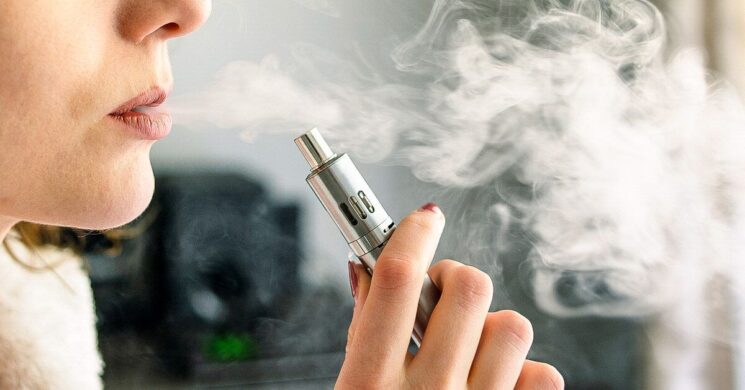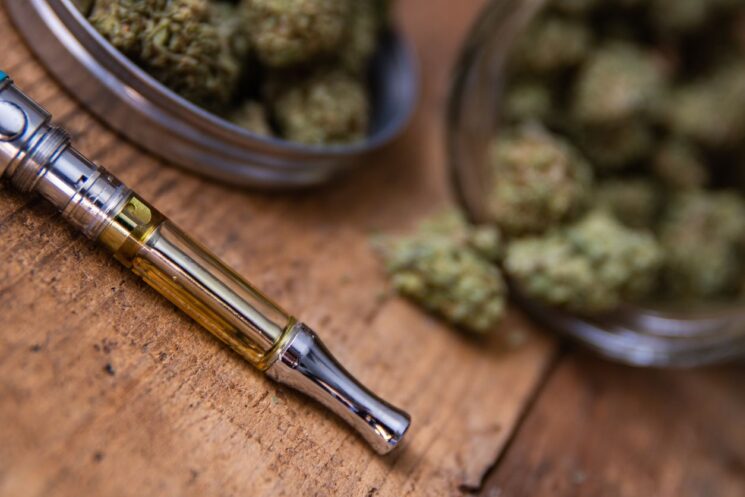Vaping has surged in popularity, providing an alternative to traditional smoking methods. However, distinguishing between THC and nicotine vapes can be challenging, especially for new users. This guide aims to demystify the differences, offering clear insights to help users make informed decisions.
In This Post
1. Understanding THC and Nicotine Vapes

THC vapes contain Tetrahydrocannabinol, the primary psychoactive component in cannabis, responsible for the ‘high’ sensation. In contrast, nicotine vapes contain nicotine derived from tobacco, which provides a stimulant effect without the harmful byproducts of tobacco smoke. While THC vapes are used both recreationally and medicinally, nicotine vapes are primarily aimed at smokers looking to quit or reduce their tobacco usage. The effects of THC vapes include altered senses, mood changes, and impaired body movement, whereas nicotine vapes mainly provide a nicotine buzz and a throat hit similar to smoking.
2. Appearance and Design
The physical appearance and design of the vape cartridges can offer clues. Typically, THC vape cartridges contain a thicker, more viscous liquid that’s often darker in color. Nicotine e-liquids, on the other hand, are thinner and lighter in color, sometimes almost clear. These distinctions arise from the different chemical compositions of THC oil and nicotine e-liquid. However, it’s important to note that appearances can be misleading as manufacturers may alter the look to mimic one another. Additionally, the design of the cartridges can vary, with some THC cartridges designed to fit specific vape pens such is THC Pen from TRĒ House, while nicotine vapes have more standardized designs compatible with a wider range of devices.
3. Labeling and Packaging

Labeling and packaging are significant indicators. Legally sold THC products typically have detailed labeling, including strain type, THC content, and a batch number for quality control. These products are also subject to state regulations, which mandate specific labeling requirements. On the other hand, nicotine e-liquids are usually labeled with the nicotine strength (measured in mg/ml), flavor, and ingredients list. They might also carry health warnings and age restriction notices. It’s essential to be cautious, as some illegal THC products may mimic the appearance of legal ones without providing accurate or safe information. In regions where THC is not legal, products may lack proper labeling, posing risks to users.
4. The Smell Test
The aroma can be a revealing factor. THC vape oil typically emits a distinct cannabis scent, which can range from earthy and herbal to sweet and fruity, depending on the strain. Nicotine e-liquids, however, are often flavored and can smell like anything from tobacco and menthol to various fruits, sweets, and other creative blends. Unflavored nicotine e-liquids have a faint, slightly sweet smell due to the propylene glycol and vegetable glycerin base. It’s important to remember that some THC oils may have added flavors, potentially complicating the smell test.
5. Vaping Experience and Effects
The vaping experience itself can distinguish between THC and nicotine. THC vapes generally produce psychoactive effects like euphoria, relaxation, and sometimes anxiety or paranoia, depending on the user’s tolerance and the THC concentration. In contrast, nicotine vapes provide a stimulant effect, often described as a ‘head rush,’ followed by a calming sensation. Nicotine also delivers a noticeable throat hit, which is less pronounced with THC vapes. These effects are immediate with vaping, allowing users to recognize the difference quickly.
6. Viscosity and Bubble Movement

Examining the liquid’s viscosity and bubble movement can be informative. THC oil is notably thicker and moves slowly when the cartridge is tilted. Bubbles in THC oil take longer to rise to the top. Nicotine e-liquids are more watery, and bubbles move swiftly. This test is simple yet effective, especially when comparing cartridges side by side. However, it’s not foolproof, as some manufacturers may alter the viscosity to disguise their products.
7. Health Effects and Risks
Understanding the health effects and risks associated with each is crucial. THC vaping, especially from unregulated sources, has been linked to lung injuries and other health risks. It can also impair cognitive functions and motor skills. Nicotine vaping, while considered less harmful than smoking tobacco, still carries risks, particularly related to addiction and potential long-term lung impact. Both substances can have adverse effects on developing brains, making them unsuitable for adolescents.
8. Legal Status and Availability
The legal status and availability can vary greatly. In regions where cannabis is legal, THC vapes are available in licensed dispensaries with strict quality controls. In contrast, nicotine vapes are widely available in various retail outlets, including vape shops, convenience stores, and online. In areas where THC is illegal, products found are likely unregulated, posing significant health risks. Understanding the legal landscape in your area is essential for safe and legal consumption.
9. Price Comparison

Price can be an indicator, though it’s not always reliable. Generally, THC vape cartridges are more expensive than nicotine e-liquids, reflecting the cost of cannabis extraction and regulation compliance. However, prices can overlap, and in regions where THC is illegal, black market prices can vary widely. It’s also worth considering that nicotine e-liquids come in larger quantities than THC cartridges, which are often sold in half or full gram increments.
10. Battery and Device Compatibility
Different vapes require different batteries and devices. THC cartridges often require specific types of vape pens, which are typically small, discreet, and have lower power settings to accommodate the thicker oil. Nicotine vapes, however, come in a variety of forms, including pod systems, mods, and pens, with varying power settings and customization options. Checking compatibility can help identify the type of vape cartridge you have.
11. Online Reviews and Forums
Online reviews and forums can be valuable resources for information. Users often share their experiences and knowledge about specific products, including their appearance, effects, and quality. By researching a specific brand or product, you can gain insights that help differentiate between THC and nicotine vapes. However, it’s important to use reputable sources and be aware of biased or inaccurate information.
12. Professional Consultation
If you’re still uncertain, consulting a professional can provide clarity. Staff at licensed dispensaries are knowledgeable about THC products and can offer advice. Similarly, vape shop employees can assist with queries about nicotine products. When in doubt, seeking expert advice is the safest way to ensure you are correctly identifying and using vape products.